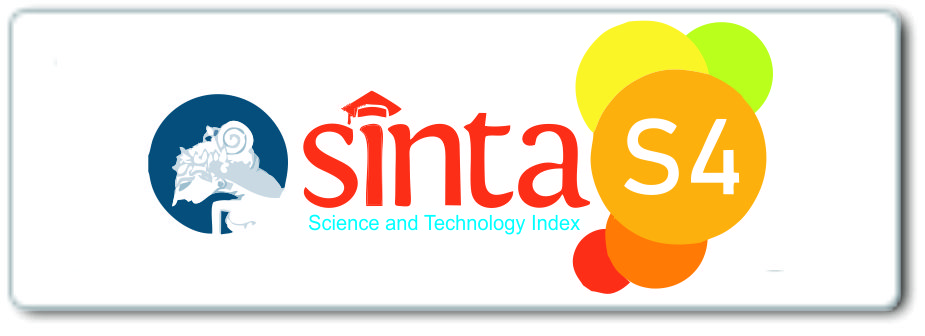Prevalence And Factors That Contributing of Baby Blues Syndrome On Postpartum Mothers
DOI:
https://doi.org/10.56988/chiprof.v1i2.10Keywords:
Syndrome Baby Blue, Postpartum, Postpartum DepressionAbstract
Baby Blues syndrome describes different groups of depressive symptoms that can occur during the first 6 weeks after birth. The postpartum period is the critical time during which mild and severe mood disorders can occur. Understanding the prevalence and related factors of Baby Blues Syndrome becomes mandatory for early detection and treatment. The institution-based cross-sectional study was conducted from May 1 to June 30, 2021. Study participants were qualified women who visited hospitals and health centers in Muara Enim, Indonesia for postpartum care. The Edinburgh postnatal depression scale was used to assess ba by blues syndrome. A systematic random sampling technique was used to collect the data, then coded instatistical tests with spss application version 24. Bivariate and multivariate binary logistic regressions are performed to decipher related factors. A total of 208 mothers who visited postpartum care were respondents, where the response obtained was 100% of the expected target. The prevalence of Baby Blues Syndrome was found at 15.6% (95%CI = 11.7, 19.8). Several factors were found to be the baby blues sidrome i.e. single parents, poor social support, having a child currently hospitalized, and a history of family members or close relatives who died significantly associated with. The prevalence of sindrome baby blues is quite high in postpartum mothers from the results of several studies at various points of location. Major events and life traumas are associated with an increased risk of postpartum depression that gave rise to Baby Blues Syndrome. Health care providers should be aware of the state of the mother during the puerperium, they must provide support from the beginning of pregnancy to reduce the risk of depression in the postpartum period. Health care professionals working in postpartum care clinics should pay special attention to mothers who are single parents, have poor social support, have children hospitalized at this time, and experience the death of family members or close relatives.
Downloads
References
Akbarzadeh, M., Mokhtaryan, T., Amooee, S., Moshfeghy, Z., & Zare, N. (2015). Investigation of the effect of Investigation of the Effect of religious doctrines on religious knowledge and attitude and postpartum blues in primiparous women. Iranian Journal of Nursing and Midwifery Research, 20(5), 570–576. https://doi.org/10.4103/1735-9066.164586
Ayu, I. P., Lusiani, M., Alifani, H., Yulidar, E., & Nurhayati. (2022). RELATIONSHIP BETWEEN MANAGEMENT OF FAMILY FUNCTIONS AND MARRIAGE SATISFACTION WITH THE EVENT OF POSTPARTUM BLUES IN POSTPARTUM MOTHERS IN THE WORK AREA OF KRAMATWATU PUBLIC HEALTH CENTER. Journal of Industrial Engineering & Management Research, 3(3), 262–270.
Badr, H. A., & Zauszniewski, J. A. (2017). Kangaroo care and postpartum depression: The role of oxytocin. International Journal of Nursing Sciences, 4(2), 179–183. https://doi.org/10.1016/j.ijnss.2017.01.001
Deniati, E. N., Annisaa, & Agnesfadia, S. (2022). The Effect of Sports on the Phenomenon of Baby Blues Syndrome (Postpartum Blues) in Postpartum Mothers. Proceedings of the 5th International Conference on Sport Science and Health (ICSSH 2021), 45(Icssh 2021), 66–74. https://doi.org/10.2991/ahsr.k.220203.010
Denis, A., Ponsin, M., & Callahan, S. (2012). The relationship between maternal self-esteem, maternal competence, infant temperament and post-partum blues. Journal of Reproductive and Infant Psychology, 30(4), 388–397. https://doi.org/10.1080/02646838.2012.718751
Akbarzadeh, M., Mokhtaryan, T., Amooee, S., Moshfeghy, Z., & Zare, N. (2015). Investigation of the effect of Investigation of the Effect of religious doctrines on religious knowledge and attitude and postpartum blues in primiparous women. Iranian Journal of Nursing and Midwifery Research, 20(5), 570–576. https://doi.org/10.4103/1735-9066.164586
Ayu, I. P., Lusiani, M., Alifani, H., Yulidar, E., & Nurhayati. (2022). RELATIONSHIP BETWEEN MANAGEMENT OF FAMILY FUNCTIONS AND MARRIAGE SATISFACTION WITH THE EVENT OF POSTPARTUM BLUES IN POSTPARTUM MOTHERS IN THE WORK AREA OF KRAMATWATU PUBLIC HEALTH CENTER. Journal of Industrial Engineering & Management Research, 3(3), 262–270.
Badr, H. A., & Zauszniewski, J. A. (2017). Kangaroo care and postpartum depression: The role of oxytocin. International Journal of Nursing Sciences, 4(2), 179–183. https://doi.org/10.1016/j.ijnss.2017.01.001
Deniati, E. N., Annisaa, & Agnesfadia, S. (2022). The Effect of Sports on the Phenomenon of Baby Blues Syndrome (Postpartum Blues) in Postpartum Mothers. Proceedings of the 5th International Conference on Sport Science and Health (ICSSH 2021), 45(Icssh 2021), 66–74. https://doi.org/10.2991/ahsr.k.220203.010
Denis, A., Ponsin, M., & Callahan, S. (2012). The relationship between maternal self-esteem, maternal competence, infant temperament and post-partum blues. Journal of Reproductive and Infant Psychology, 30(4), 388–397. https://doi.org/10.1080/02646838.2012.718751
Dowlati, Y., Segal, Z. V., Ravindran, A. V., Steiner, M., Stewart, D. E., & Meyer, J. H. (2014). Effect of dysfunctional attitudes and postpartum state on vulnerability to depressed mood. Journal of Affective Disorders, 161, 16–20. https://doi.org/10.1016/j.jad.2014.02.047
Edmonds, D. K. (2012). Puerperium and Lactation. In Postnatal Care (pp. 365–376).
Gerli, S., Fraternale, F., Lucarini, E., Chiaraluce, S., Tortorella, A., Bini, V., Giardina, I., Moretti, P., & Favilli, A. (2019). Obstetric and psychosocial risk factors associated with maternity blues. Journal of Maternal-Fetal and Neonatal Medicine, 34(8), 1227–1232. https://doi.org/10.1080/14767058.2019.1630818
Howard, L. M., Molyneaux, E., Dennis, C. L., Rochat, T., Stein, A., & Milgrom, J. (2014). Non-psychotic mental disorders in the perinatal period. The Lancet, 384(9956), 1775–1788. https://doi.org/10.1016/S0140-6736(14)61276-9
Kennerley, H., & Gath, D. (1989). Maternity blues. I. Detection and measurement by questionnaire. British Journal of Psychiatry, 155(SEP.), 356–362. https://doi.org/10.1192/bjp.155.3.356
Kurniawati, D., & Septiyono, E. A. (2022). Determinants of Postpartum Blues in Indonesia. Pediomaternal Nursing Journal, 8(1), 1–8.
Leahy-Warren, P., Mccarthy, G., & Corcoran, P. (2012). First-time mothers: Social support, maternal parental self-efficacy and postnatal depression. Journal of Clinical Nursing, 21(3–4), 388–397. https://doi.org/10.1111/j.1365-2702.2011.03701.x
M, M., McKelvey, & Espelin, J. (2018). Postpartum depression : Beyond the “ baby blues ” (Issue June).
Maliszewska, K., Światkowska-Freund, M., Bidzan, M., & Preis, K. (2016). Relationship, social support, and personality as psychosocial determinants of the risk for postpartum blues. Ginekologia Polska, 87(6), 442–447. https://doi.org/10.5603/GP.2016.0023
Manjunath, N., Venkatesh, G., & Rajanna. (2011). Postpartum blue is common in socially and economically insecure mothers. Indian Journal of Community Medicine, 36(3), 231–233. https://doi.org/10.4103/0970-0218.86527
Manurung, S., & Setyowati, S. (2021). Development and validation of the maternal blues scale through bonding attachments in predicting postpartum blues. Malaysian Family Physician, 16(1), 64–74. https://doi.org/10.51866/OA1037
Mirhosseini, H., Moosavipoor, , Seyed Ahmad, Nazari, M. A., Dehghan, A., Mirhosseini, S., Bidaki, R., & Yazdian-anari, P. (2015). Cognitive Behavioral Development in Children Following Maternal Postpartum Depression: A Review Article. Electronic Physician, 7(8), 1673–1679. https://doi.org/10.19082/1673
Nilaweera, I., Doran, F., & Fisher, J. (2014). Prevalence, nature and determinants of postpartum mental health problems among women who have migrated from South Asian to high-income countries: A systematic review of the evidence. Journal of Affective Disorders, 166, 213–226. https://doi.org/10.1016/j.jad.2014.05.021
Ntaouti, E., Gonidakis, F., Nikaina, E., Varelas, D., Creatsas, G., Chrousos, G., & Siahanidou, T. (2018). Maternity blues: risk factors in Greek population and validity of the Greek version of Kennerley and Gath’s blues questionnaire. In Journal of Maternal-Fetal and Neonatal Medicine (Vol. 33, Issue 13). https://doi.org/10.1080/14767058.2018.1548594
O’Hara, M. W., & Wisner, K. L. (2014). Perinatal mental illness: Definition, description and aetiology. Best Practice and Research: Clinical Obstetrics and Gynaecology, 28(1), 3–12. https://doi.org/10.1016/j.bpobgyn.2013.09.002
O’Keane, V., Lightman, S., Patrick, K., Marsh, M., Papadopoulos, A. S., Pawlby, S., Seneviratne, G., Taylor, A., & Moore, R. (2011). Changes in the maternal hypothalamic-pituitary-adrenal axis during the early puerperium may be related to the postpartum “blues.” Journal of Neuroendocrinology, 23(11), 1149–1155. https://doi.org/10.1111/j.1365-2826.2011.02139.x
Okunola, T. O., Awoleke, J. O., Olofinbiyi, B., Rosiji, B., Omoya, S., & Olubiyi, A. O. (2021). Postnatal Blues: a Mirage or Reality. Journal of Affective Disorders Reports, 6, 100237. https://doi.org/10.1016/j.jadr.2021.100237
Pamogsa Daniyar, Riski, D., & Rofi’ah, S. (2020). Systematic Review: Factors Affecting Postpartum Blues. MIKIA: Mimbar Ilmiah Kesehatan Ibu Dan Anak (Maternal and Neonatal Health Journal), 0825, 29–39. https://doi.org/10.36696/mikia.v5i2.78
Pop, V. J. M., Truijens, S. E. M., Spek, V., Wijnen, H. A., Van Son, M. J. M., & Bergink, V. (2015). A new concept of maternity blues: Is there a subgroup of women with rapid cycling mood symptoms? Journal of Affective Disorders, 177, 74–79. https://doi.org/10.1016/j.jad.2015.02.015
Putri, H. F. W., & Putri, F. R. (2022). How To Cope With Baby Blues: a Case Report. Journal of Psychiatry Psychology and Behavioral Research, 3(1), 13–15. https://doi.org/10.21776/ub.jppbr.2022.003.01.4
Rezaie-Keikhaie, K., Arbabshastan, M. E., Rafiemanesh, H., Amirshahi, M., Ostadkelayeh, S. M., & Arbabisarjou, A. (2020). Systematic Review and Meta-Analysis of the Prevalence of the Maternity Blues in the Postpartum Period. JOGNN - Journal of Obstetric, Gynecologic, and Neonatal Nursing, 49(2), 127–136. https://doi.org/10.1016/j.jogn.2020.01.001
Ulfa, M., Monica, L. P., & Wibisono, W. (2022). The Familiarization of Post-Partum Blues Syndrome to Pregnant Women Through Health Promotion. Journal of Community Service for Health, 3(1), 011–014. https://doi.org/10.26699/jcsh.v3i1.art.p011-014
Werdani, K. E., & Anggraeni, H. N. (2017). Supported Condition for Baby Blues Mothers after Postpartum in Surakarta. Urecol, 233–240. http://journal.ummgl.ac.id/index.php/urecol/article/view/1043
Zanardo, V., Volpe, F., de Luca, F., Giliberti, L., Giustardi, A., Parotto, M., Straface, G., & Soldera, G. (2019). Maternity blues: a risk factor for anhedonia, anxiety, and depression components of Edinburgh Postnatal Depression Scale. Journal of Maternal-Fetal and Neonatal Medicine, 33(23), 3962–3968. https://doi.org/10.1080/14767058.2019.1593363
Downloads
Published
How to Cite
Issue
Section
License
Copyright (c) 2022 Ekadewi Retnosari, Siti Fatimah

This work is licensed under a Creative Commons Attribution-NonCommercial 4.0 International License.




















